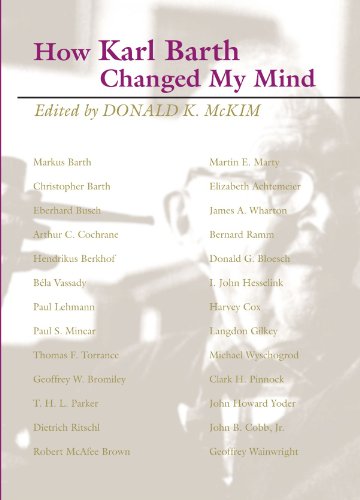John Calvin’s Institutes; His Opus Magnum: Proceedings of the second South African Congress for Calvin Research, July 31–August 3, 1984
Written by B. J. Van der Walt, Wilhelm Neuser, et al. Reviewed By Richard C. GambleThis is a collection of twenty-three papers presented in 1984 in South Africa, all dealing basically with Calvin’s Institutes. This review will concentrate on extensive analysis of only six of the papers.
Concerning the book as a whole, there is quite a bit of diversity of subjects covered and manners in which they are examined. For example, a popular paper was presented by B. J. Van der Walt on ‘Women and marriage; in the Middle Ages, in Calvin and in our own time’. This topic was presented in a very readable manner, but wandered into a myriad of other sub-points such as clothing and fashion, idleness and gossip. The subject was also presented in the context of the Reformed Church of South Africa where women still do not have the right to vote in the congregation. It is an interesting paper, but quite different in content and quality in comparison with the other ones which will be examined subsequently. A significant problem with the volume is the high number of typographical errors; from consistent misspellings of Melanchthon’s name to assorted others. At times there are misprints on every page of the volume. The last general criticism is that although all the papers are printed in English, the quality of translation is variable.
Wilhelm Neuser and Brian Armstrong tackle the general subject of the development and analysis of the Institutes. Neuser rightly characterizes the Institutio as a summary of the biblical gospel in a handbook (p. 35). He also maintains that there is more continuity between the 1536 and 1559 Institutes than discontinuity (p. 41). As he traces the development of the Institutio from 1536 he notes particularly that in 1543 there is more reflection of religious discussion against Rome and an increased acquaintance with Patristics. In 1559 there are some important re-arrangements and expansions: the third use of the law comes to the fore, analysis of Servetus and Osiander is included, and new evidence is given concerning the trustworthiness of Scripture.
Armstrong offers a fascinating analysis of the nature and structure of Calvin’s thought. He contends that Calvin scholars who have maintained that the key to understanding Calvin is observing the dialectical motif in his structure as well as stressing his piety have set the proper course. It is Armstrong’s own claim that there are always ‘two poles, two aspects, two dialectical and conflicting elements in each theological topic which [Calvin] discusses’ (p. 56). Furthermore, he alleges that Calvin should not be seen as a professional theologian writing formal theology and that if Calvin is freed from that mould he can be more properly analysed. Finally, he asserts that ‘an indispensable element in understanding the structure of [Calvin’s] theology is the conditional or hypothetical motif which one finds throughout his writings, including the Institutes’ (p. 77).
Willem Van’t Spijker presented two papers at the conference, one on the influences of Bucer on Calvin and another on the influences of Luther. Fritz Büsser presented one on the influences of the Zürich theology upon Calvin. For this review we will combine the three papers to look at influences on Calvin.
Beginning with Van’t Spijker, Luther’s influence on the 1536 Institutes is underlined (pp. 88–91) and themes taken by Calvin from Luther are presented. Nevertheless, Van’t Spijker sensitively relates the differences between the two theologians, centering in Calvin’s doctrine of the Holy Spirit and the integration of that doctrine throughout Calvin’s theology. Concerning Bucer, Van’t Spijker demonstrates Bucerian influence in at least three issues: the exposition of the Lord’s prayer (p. 109), election, and the power of the keys of the church. Van’t Spijker pointed out earlier that a main difference between Calvin and Luther is found in pneumatology; it is precisely in comparison with pneumatology that Calvin and Bucer are so similar (p. 116).
That Bucer was a strong influence in Calvin’s life is not a matter of debate. That pneumatology is one of the main pillars of Bucer’s theology, as pointed out earlier by Neuser and underlined by Van’t Spijker, is also not hotly debated. The similarities in their theology are striking: their pneumatology has a ‘christological colour’, their joint call to a holy life is clear, the similarity in their teaching on Word and Spirit is obvious, and their similar treatment of the relationship between justification and sanctification is also apparent. Van’t Spijker summarizes his findings most clearly: ‘Thus Calvinism owes its [sic] most characteristic traits to Bucer’ (p. 132).
Fritz Büsser pursues the theme of the theology of Zürich in the Institutes. His very clear findings establish: that Zwingli’s concept of religion was formative in Calvin’s 1536 Institutes, that Bullinger strongly influenced Calvin’s doctrine of the covenant, that Zwingli provided the framework for Calvin’s conception of magistracy, law and obedience and that lastly, Zürich provided ammunition in Calvin’s fight with Rome. This ably argued thesis provides clear insight into how Calvin’s theology can be comprehended, both in its similarity to and differences from the Zürich theology; a very important contribution to Calvin studies.
In conclusion, the papers of this conference have made significant advances in Calvin studies and should be strongly recommended to the reformed theological community.
Richard C. Gamble
Director, the H. Henry Meeter Center for Calvin Studies and Associated Professor of Historical Theology, Calvin Seminary, Grand Rapids







